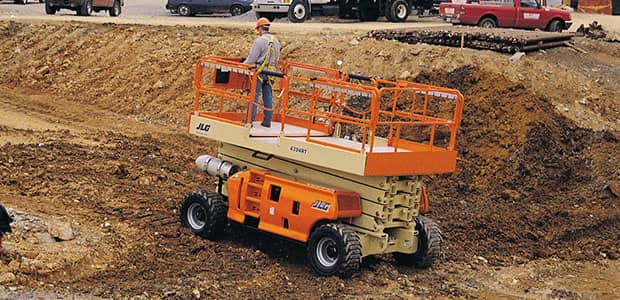A Comprehensive Method to Enhancing Performance Through Strategic Lift Repair Work Techniques
A organized and strategic method to lift repair work and upkeep is essential to take full advantage of performance and minimize downtime. By attending to typical lift concerns, implementing positive maintenance steps, and developing targeted repair service strategies, facilities can enhance their lift systems to operate at peak performance levels.
Importance of Lift Performance Optimization
Recognizing the importance of maximizing lift performance is crucial for making certain dependable and effective upright transportation systems in various buildings and frameworks. Lifts are vital components of contemporary framework, offering vertical flexibility for passengers and items within structures of varying elevations. By maximizing lift efficiency, building owners and facility managers can boost user experience, improve energy effectiveness, and increase total functional effectiveness.
Effective lift efficiency optimization includes numerous aspects, including speed, ability, power security, maintenance, and usage requirements. Effectively maximized lifts can reduce wait times for users, especially in high-traffic buildings, causing improved complete satisfaction and efficiency. Additionally, optimized lifts add to power cost savings by making use of sophisticated control systems and technologies that minimize power usage without jeopardizing performance.

Identifying Common Lift Issues
Determining common lift problems is crucial for maintaining the operational effectiveness and safety and security of upright transportation systems in buildings. This issue can be a sign of troubles with the lift's motor, control system, or even the positioning of the lift cars and truck.
Another prevalent lift problem is odd sounds rising from the lift shaft or machinery room. These noises can range from grinding or scuffing audios to loud clunking noises, all of which may indicate underlying mechanical problems that need prompt interest. In addition, constant door breakdowns, such as doors not opening up or closing effectively, can interfere with the smooth circulation of travelers and present safety and security risks.
Executing Positive Upkeep Procedures
To enhance the performance and durability of lift systems, positive upkeep measures play a vital duty in ensuring functional integrity and security. lift servicing companies. Implementing positive upkeep involves systematically inspecting, servicing, and repairing parts prior to they stop working, therefore preventing pricey downtime and prospective safety hazards. Regularly scheduled examinations can assist identify small problems before they escalate into significant issues, ultimately expanding the life-span of lift systems
One key aspect of positive maintenance is developing a detailed upkeep schedule based upon manufacturer recommendations and industry finest practices. This routine ought to outline tasks such as lubrication, positioning checks, and component substitutes at defined periods. Additionally, carrying out problem tracking strategies, such as vibration analysis and thermal imaging, can help spot very early indications of wear or breakdown.
Furthermore, training upkeep team on appropriate evaluation methods and precautionary upkeep treatments is vital for the effective implementation of positive upkeep measures. By promoting a society of positive upkeep within a company, lift systems can operate at peak performance levels, decreasing interruptions and ensuring the safety of individuals.
Establishing Targeted Repair Service Strategies
Upon examining the upkeep documents and performance information, the design group can establish targeted repair service strategies to resolve specific concerns and maximize lift system capability. These fixing strategies are customized to the recognized troubles, making certain that sources are concentrated on settling crucial problems effectively. By prioritizing repairs based upon their influence on efficiency and security, the targeted repair work plans aid decrease downtime and upkeep prices while optimizing the lift system's dependability.
Developing these strategies includes a detailed evaluation of the lift system elements, consisting of motors, cords, brakes, useful source and control systems. Via this in-depth analysis, the engineering team can establish the root causes of any kind of malfunctions or destruction in efficiency. This info is then used to develop a roadmap for the repair work procedure, outlining the essential actions, timeline, and resources called for to deal with each concern successfully.
Furthermore, targeted repair plans might include preventative actions to boost the lift system's durability and efficiency. By proactively resolving prospective concerns before they rise, these plans add to the overall effectiveness and safety of the lift system.
Making Use Of Data-Driven Insights
Using the power of data-driven insights is critical in optimizing lift system performance and upkeep effectiveness. By leveraging information analytics, lift operators can make educated choices that lead to enhanced operational efficiency and cost savings. With the evaluation of historic performance patterns, information and trends can be determined, enabling predictive upkeep strategies to be executed. These anticipating upkeep strategies aid stop unanticipated breakdowns, decrease downtime, and prolong the life-span of lift systems.

Verdict
Finally, optimizing lift performance is vital for guaranteeing performance and safety and security in buildings. By identifying typical lift concerns, implementing positive upkeep steps, establishing targeted repair service strategies, and making use of data-driven insights, organizations can improve efficiency and reduce downtime. It is essential to take a comprehensive method to lift repair strategies to maximize functional performance and make certain the longevity of lift systems.
By attending to typical lift problems, carrying out positive maintenance procedures, and creating targeted fixing strategies, facilities can optimize their lift systems to operate at peak performance levels.Another widespread lift concern is odd sounds rising Recommended Site from the lift shaft or equipment area.Upon assessing the upkeep documents and efficiency information, my link the engineering group can create targeted repair service plans to enhance and deal with details issues lift system capability. By focusing on repairs based on their influence on performance and security, the targeted fixing plans help decrease downtime and maintenance expenses while taking full advantage of the lift system's reliability.
It is crucial to take a detailed approach to raise repair work techniques to make best use of operational effectiveness and ensure the durability of lift systems.
Comments on “Professional Lift Repair Providers: How to Choose the Right Lift Service Company”